The Best Things to do at the San Francisco Japanese Tea Garden with Kids.
Where can you and your family find koi ponds, towering pagodas, cherry blossoms, and a zen garden in the middle of a busy city?
You can find it all in the San Francisco Japanese Tea Garden!
Disclosure: This page may use affiliate links which may earn a commission for purchases at no additional cost to you. Thanks so much for all your support!
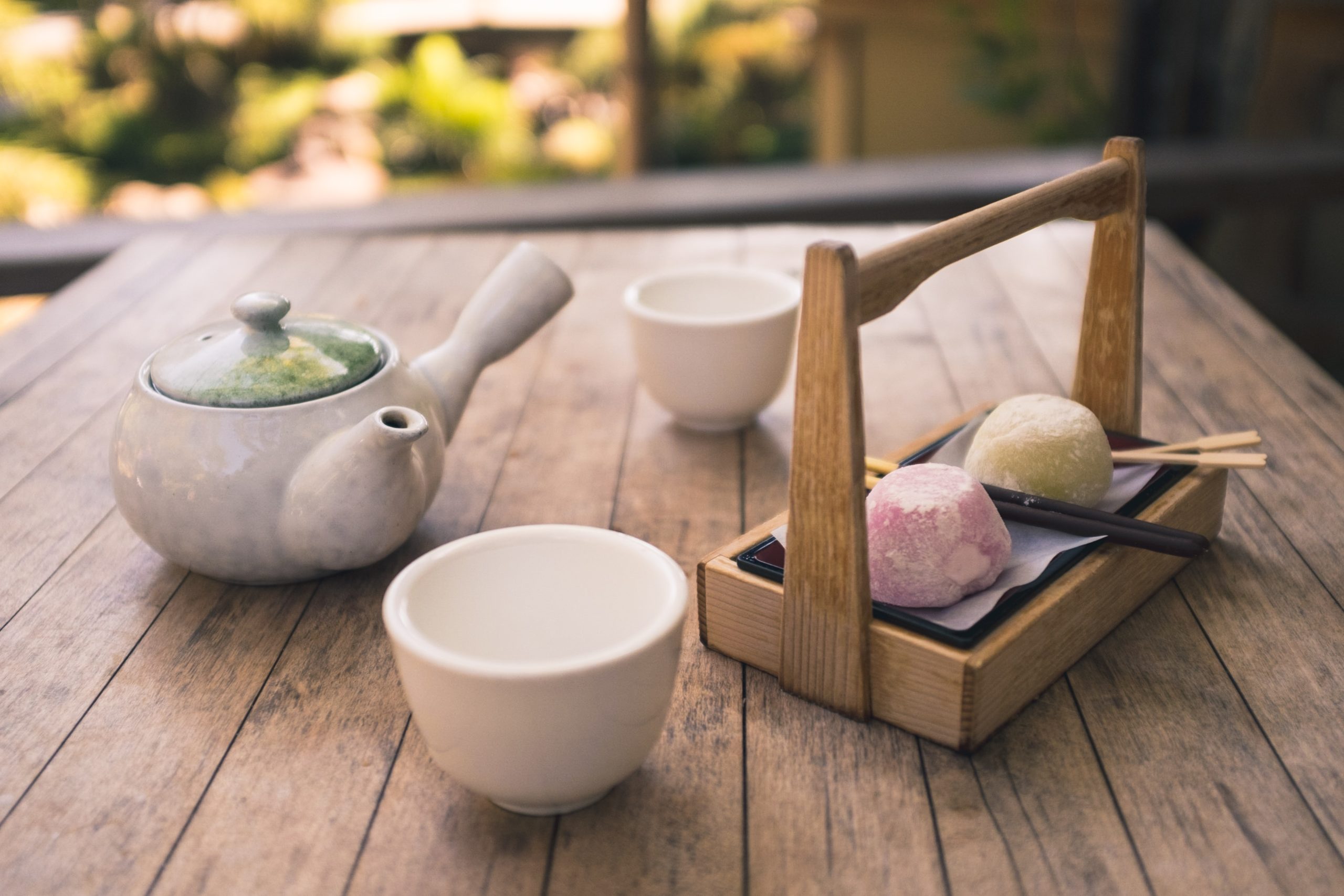
San Francisco Japanese Tea Garden:
a magical escape for the whole family
The San Francisco Japanese Tea Garden is well-loved by many families because it provides a tranquil, yet magical escape for kids to explore.
There are several different paths to take inside the Tea Garden which lead young adventurers across koi ponds, over a drum bridge, past a giant Buddha, and through a zen garden. And the best part is that every path you choose takes you somewhere truly special.
In this post we’ll first touch on all the basic info you need to know before visiting the garden and then we’ll explore some of the best things to do and see there while in this beautiful space.
And stick around until the end for more family-friendly things to do in San Francisco!
What is the
Japanese Tea Garden?
The San Francisco Japanese Tea Garden is a tranquil, 5-acre, Japanese-style garden located in the heart of Golden Gate Park.
It was designed in 1894 by a Japanese landscape architect named Makoto Hagiwara, who also eventually took on the role of caretaker for the garden after it was built.
Hagiwara poured his heart and soul into the garden. In fact, he and his family even lived in the garden for many year. Even past his death in 1925, Hagiwara’s family continued to reside in the garden until they were force to move to Japanese interment camps in 1942.
Sadly, the Hagiwara family was not allowed back into heir home once World War II ended, but over the years the garden’s beauty was preserved, and today, the Japanese Tea garden is one of Golden Gate Park’s most popular attractions with stunning Japanese elements and rich, cultural history.
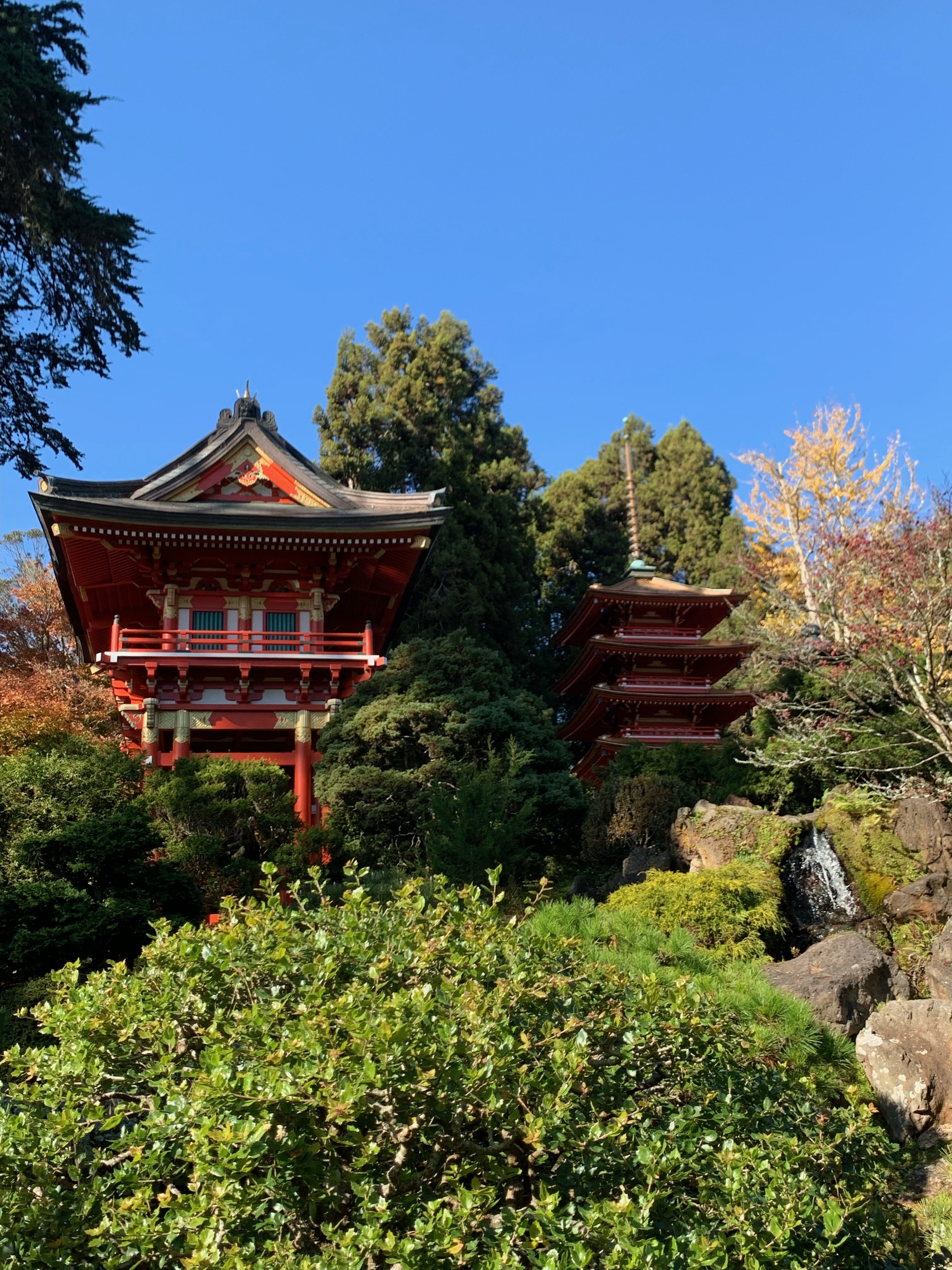
Where is the San Francisco Japanese Tea Garden?
The Japanese Tea Garden is located in the heart of San Francisco’s beautiful Golden Gate Park. It sits on one end of the park’s music concourse, which is a beautiful area filled with fountains, museums, and a stage for live music.
What else can I do nearby the San Francisco Japanese Tea Garden?
Since it is situated in a bustling part of Golden Gate Park. There is plenty of other things to do near the Japanese Tea Garden.
- California Academy of Sciences
- The De Young Museum
- Live music every Sunday at the Bandshell stage
- The San Francisco Botanical Gardens
- Restaurants and shops in the Upper Irving area of the city.
How much are tickets to the
San Francisco Japanese Tea Garden?
GENERAL ADMISSION PRICES
| Adults (ages 18–64) November – January February – October | $10 .00 $13.00 |
| Youth (ages 12–17) | $7.00 |
| Children (ages 5-11) | $3.00 |
| Children (under 5) | FREE |
FREE ADMISSION IS POSSIBLE THROUGH THESE PROGRAMS:
Free for San Francisco Residents
Free for veterans
Anyone can get in the garden for free during these times
- Mondays 9am-10am
- Wednesdays 9am-10am
- Friday 9am-10am
GARDENS OF GOLDEN GATE PASS
This pass allows for unlimited visits to Golden Gate Park’s gardens: the Japanese Tea Garden, Botanical Garden, and the Conservatory of Flowers.

San Francisco Japanese Tea Garden:
Frequently Asked Questions
When’s the best time to visit the Japanese Tea Garden?
Although the garden is gorgeous all year round, the best time of year to visit is in March or April when blossoms are in bloom
During the day, like many attractions, the earlier you visit, the better. This way you can see most of the garden before the mid-day crowds arrive.
What time is the Japanese Tea Garden open?
Winter Hours
November – January
9:00am – 5:00pm
Summer Hours
February – October
9:00am – 6:00pm
Are dogs allowed at the Japanese Tea Garden?
What’s the parking situation like?
There is free street parking by the garden, however, finding a spot can be difficult especially on holidays and weekends. For the best chance at scoring free street parking, be sure to arrive at the park early and before the Japanese Tea Garden opens.
Alternatively, there is also a big, paid parking lot located at the music concourse where the Japanese Tea Garden is located. There are two entrances to this lot. One is along the perimeter of the park on Fulton & 10th avenue. The other entrance is located right by the front entrance of the California Academy of Sciences, which is also in the Golden Gate Park music concourse.
How much time do I need at the Japanese Tea Garden?
The Japanese Tea Garden in Golden Gate Park is small but jam packed with beautiful things to see. Plan to set aside at least an 90minutes to truly be able to enjoy everything without rushing.
Are strollers allowed in the garden?
While strollers are allowed in the Japanese Tea Garden, maneuvering one while inside can be quite tricky since the paths in the garden consist of stairs and stepping stones that cross small ponds. It would be best to leave strollers behind if possible.
Are picnics allowed in the garden?
No. Picnics are not allowed in the Japanese Tea Garden. However, you can bring in your own light snacks to eat while walk and there is a great tea house where you can buy food if needed.
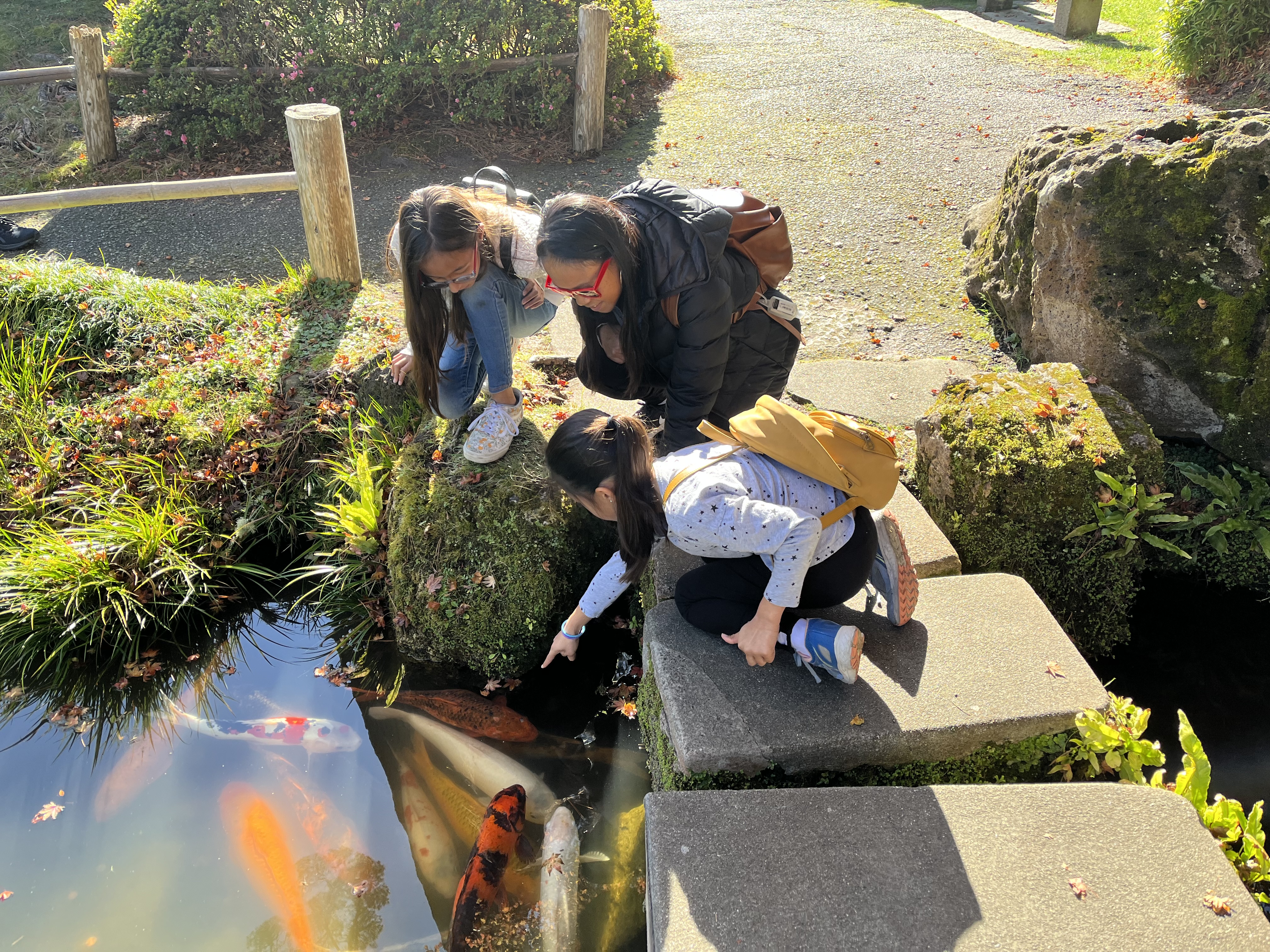
What is there for kids to do at the San Francisco Japanese Tea Garden?
Walking around the Japanese Tea Garden makes you feel like you just got off a plan in a totally different country. The perfectly manicured foliage, calming ponds, and tranquil vibes is truly a great change of pace from the busy city.
With that said, it is definitely a great place for families to explore and learn together. Here are some things you and your kids will love at the Japanese Tea Garden that’ll leave you walking out feeling more connected to nature and Japanese culture.

Have a snack at the tea house
Tea is not simply a hot beverage in Japanese culture. It is also an integral part of many ceremonies, which symbolizes harmony, tranquility, and respect.
That being said, one thing you absolutely must do at the San Francisco Japanese Tea Garden is have some tea and snacks at the tea house.
The tea house is nicely nestled by the front entrance of the tea garden and overlooks the beautiful landscaping. Here, you can grab seat, feed hungry bellies, and warm yourself up with a hot cup of tea.
While hot tea is the highlight of the tea house menu, there are also other great food and drinks to order. Here are some ideas of the other treats you can get at the tea house.
- udon
- miso soup
- backed buns
- edemame
- tea cookies
- ice cream
- mochi
- chicken karaage
- Ramune (a must for kids who like sweet, fizzy drinks)
More family-friendly San Francisco Food Adventures
North Beach and Little Italy Food Tour
China Town Culinary Walking Tour
San Francisco Farmer’s Market and Ferry Building Food Tour
Climb up and over the moon bridge
One of the key features at the San Francisco Japanese Tea garden that all kids get a kick out of is the moon bridge.
A moon bridge, which is also sometimes referred to as a drum bridge, is a very pedestrian bridge with a very steep arch.
Many kids love this bridge because it requires them to first climb up the steep ascent like a ladder. Once at the top they can stand up and get a great few of the garden from up high. The way down is just as fun too, as they’ll have to decide whether they want to descend either facing out as if walking down an extremely step stair case, or facing towards the bridge to climb down like a ladder.
And whats great is that if they can’t decided, they can cross the bridge more than once.

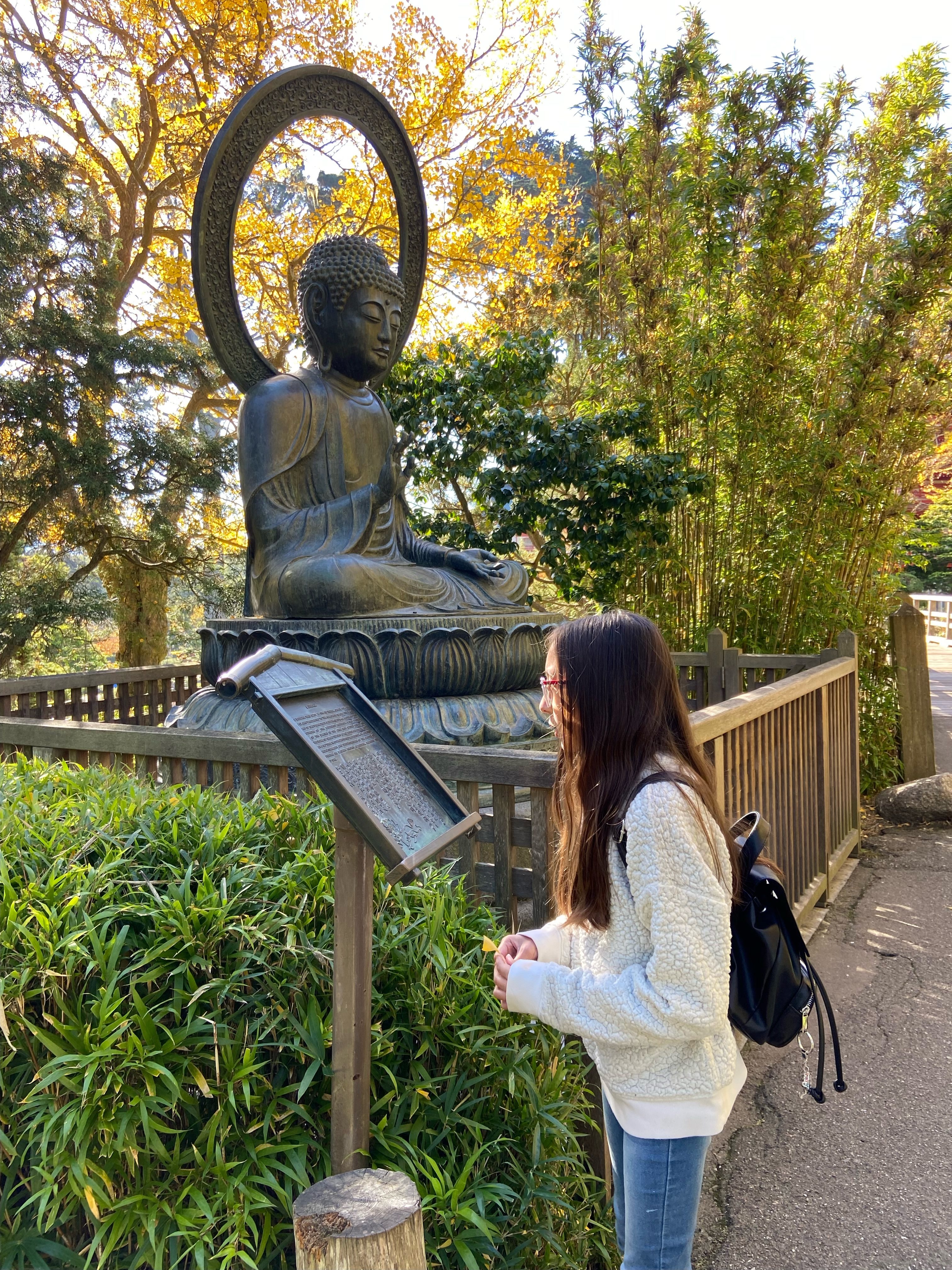
Read about Prince Siddhartha at the Buddha statue.
One of Japan’s 3 major religions is Buddhism, so it would make sense that another reason to visit the Japanese Tea Garden in San Francisco is its 1.5 ton statue of Buddha .
This statue, which was donate to the garden in 1928, stands at an magnificent 11 feet and is sure to impress youngsters.
At this statue, you can read about the fascinating and inspiring story of Prince Siddhartha Gautama who was born into riches and royalty, and later became the Buddha, after giving up his royal life in order to find peace and calm in a world that was so full of suffering and sadness.
Grab hand-crafted goods at the gift shop
Who doesn’t love a little souvenir shopping?
This is why making a stop at the gift shop when visiting the Japanese Tea Garden is a must.
The building where the shop is located is right by the tea house and possesses beautiful Japanese architecture and interior design.
The items for sale in the shop are purely Japanese as well, and everything is so beautifully crafted that one can spend a lot of time simply browsing and admiring the artistry.
Some of the items you might find at the shop include:
- kokeshi dolls
- tea sets
- sake sets
- teas
- Japanese figurines
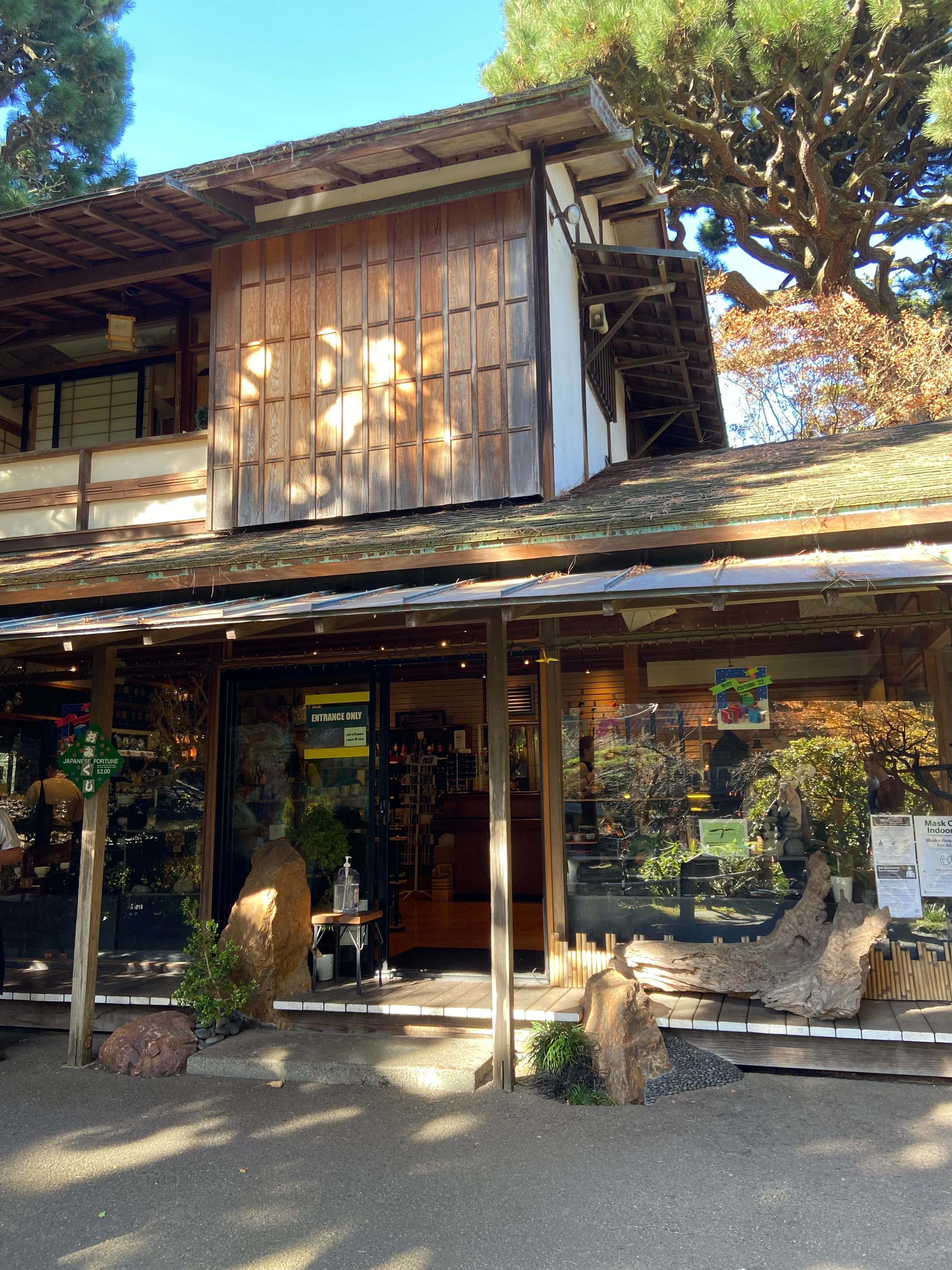
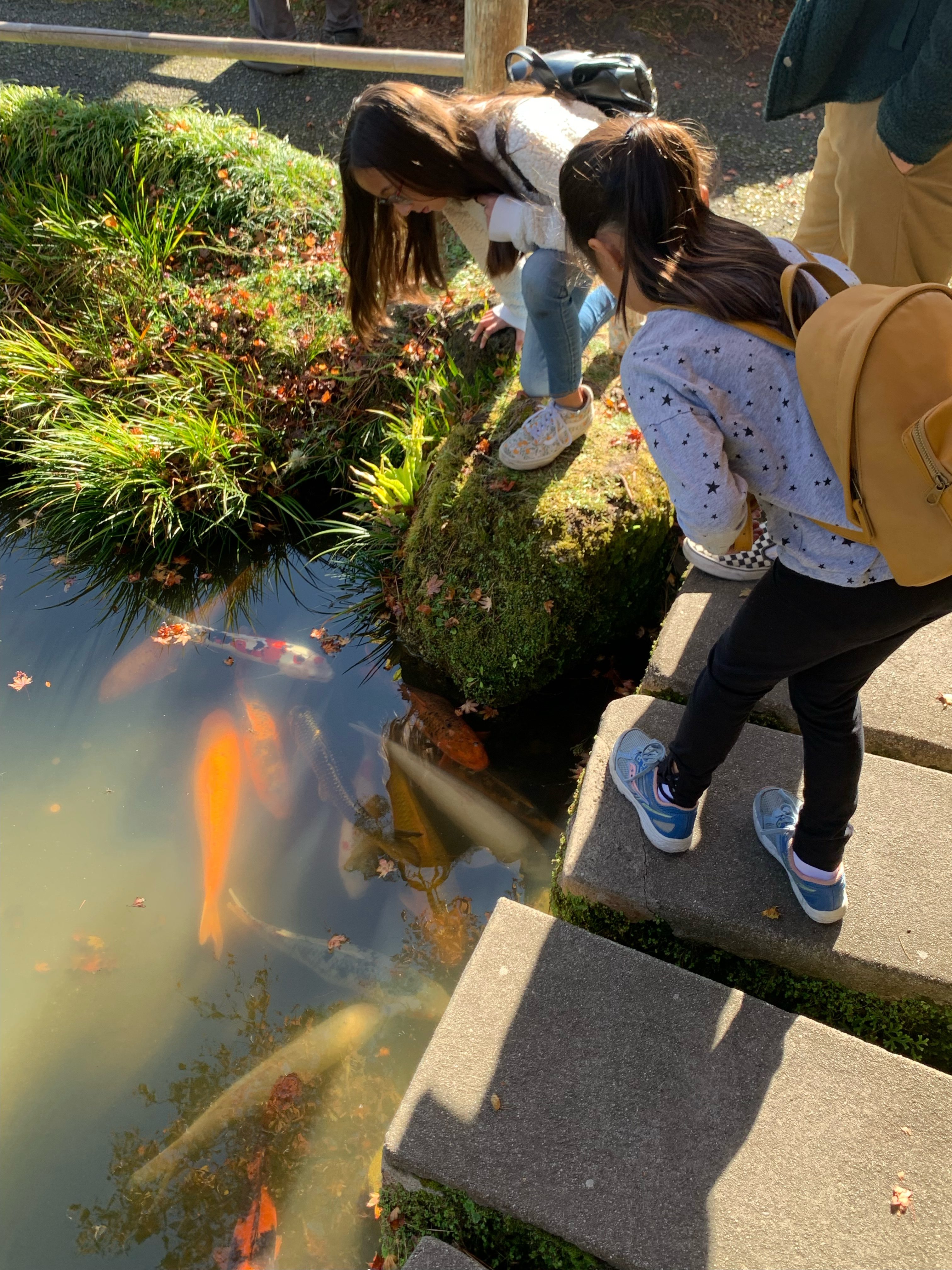
Observe the koi fish and water striders in the ponds
Koi fish are a symbol of strength, courage, and perseverance. That’s why you can easily spot many huge koi swimming in one of the many ponds at the Japanese Tea Garden. Simply watching them swim through the water is soothing and their shear size is amazing.
In the pods, your kids can also spot water striders skipping along the surface of the water. Because they seem to defy all laws of physics, these little critters are truly enjoyable to watch and your little ones will find them extremely interesting as well.
Admire the raked pebbles at the
zen garden
Another great thing to do with kids at the Tea Garden is check out the zen garden.
Zen gardens, which are also sometimes referred to as rock gardens, are distinctive Japanese style gardens that have the central elements of sand, rocks, gravel, and sometimes moss and shrubs.
Commonly found in temples and monasteries, its purpose is to provide a meditative, tranquil space that’s free of distractions.
The zen garden at the San Francisco Japanese Tea Garden might be on the smaller side, but it still offers so much calm and serenity. Stopping by this area for a quick moment of stillness is definitely worth it.
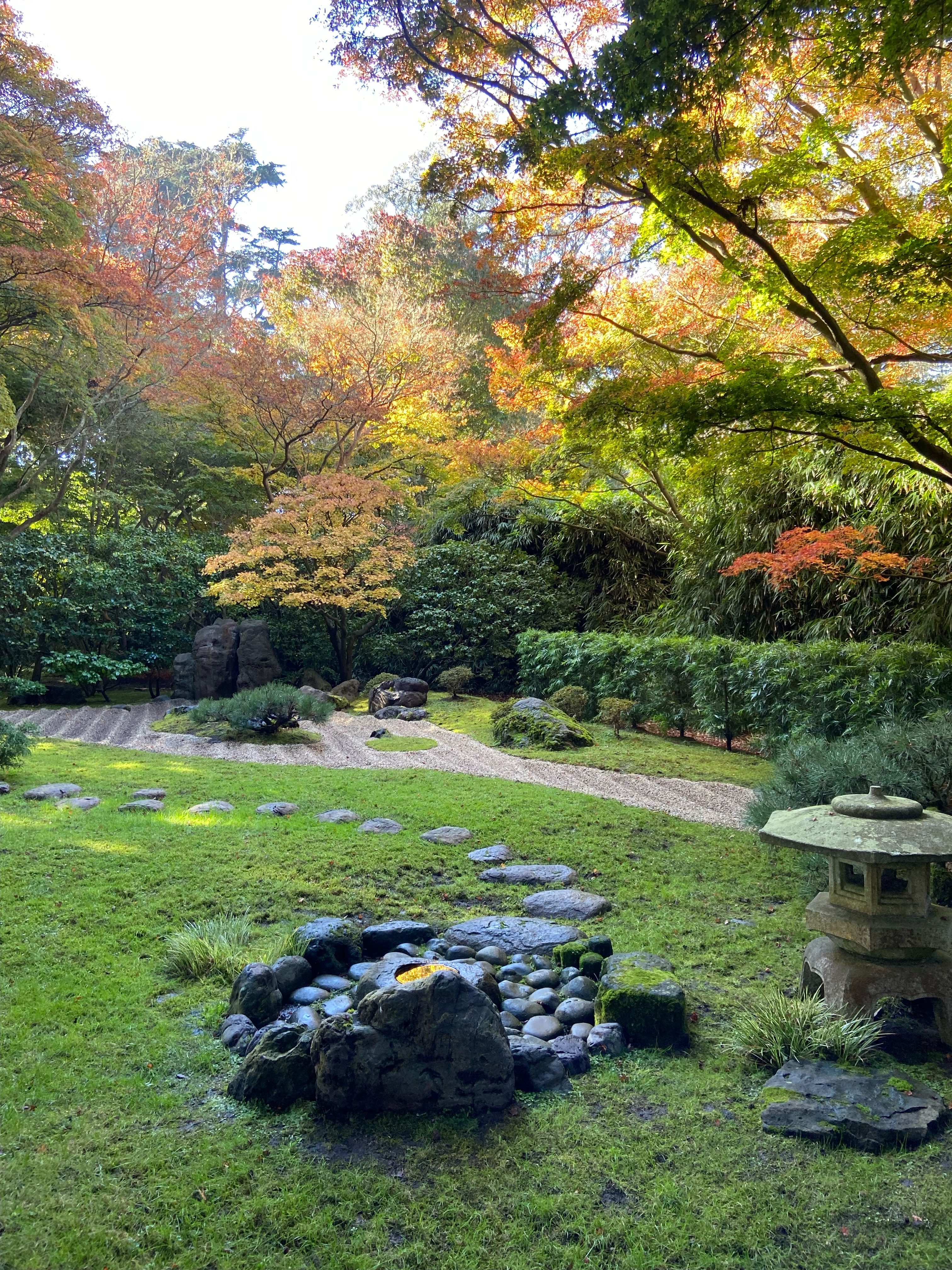
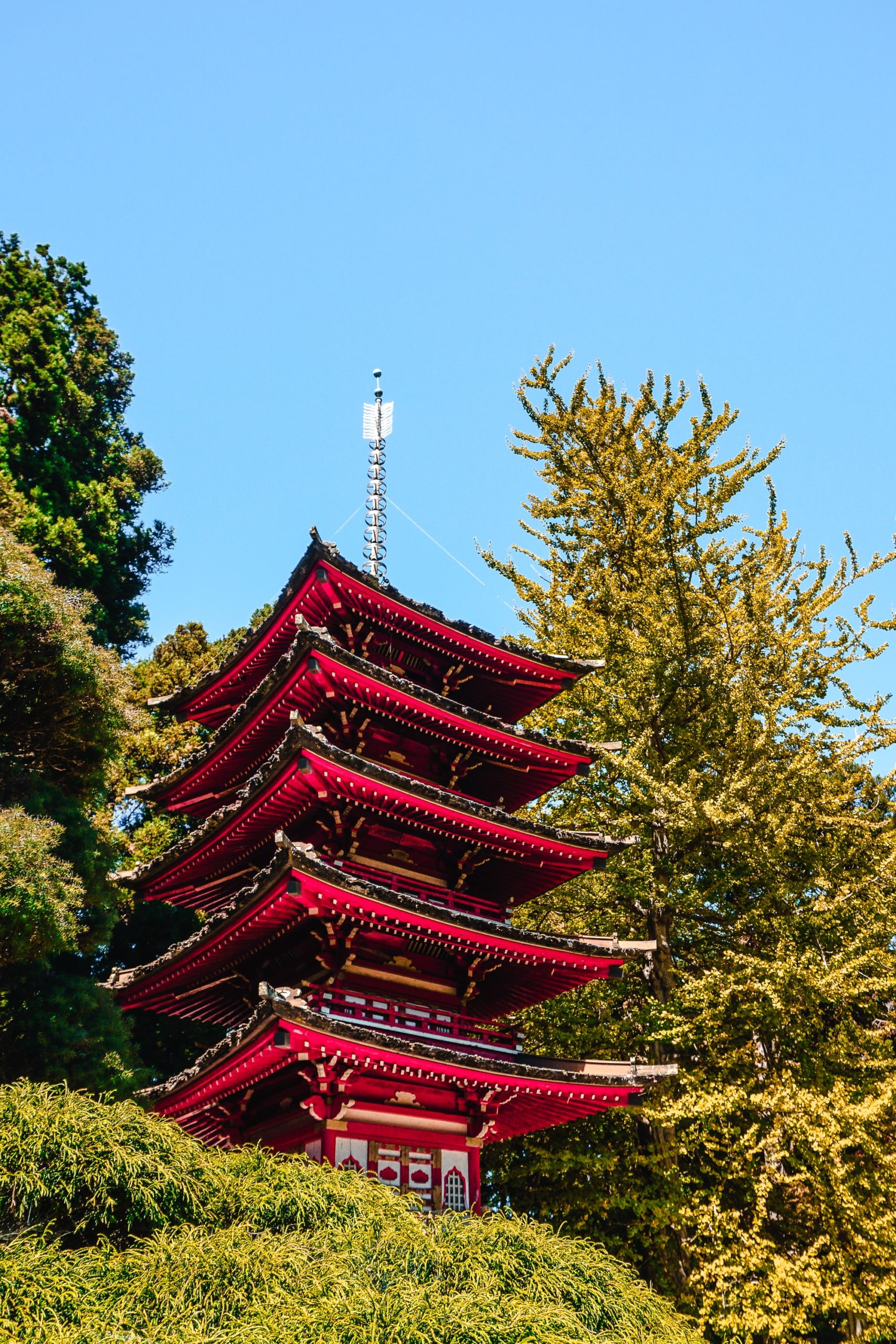
Check out the
iconic pagoda
The bright, red pagodas at the Japanese Tea Garden is very hard to miss and is worth admiring for their tiered roofs, intricate details, and shear beauty.
What’s interesting about the 5-story pagoda is that it was actually never meant to remain outdoors. In fact, it was initially stored indoors in 1915, but was later moved to the Japanese Tea Garden where it has remained outdoors ever since. Surprisingly, it has withstood San Francisco’s outdoor conditions.
The iconic pagoda underwent a much-needed 2-year renovation which was completed in the fall of 2022. Now it’s got some well-deserved new shingles, new chimes, and a fresh coat of bright, red paint.
Taking some time with the family to spot all the little details of the pagoda is well worth it. Plus it makes for a great backdrop for gorgeous family photos.
Tips and Tricks for Visiting the
Japanese Tea Garden with Kids
- Consider leaving the strollers at home.
- Arrive early to beat the crowds
- Visit the tea house as soon as they open since lines can get long, especially on holidays and weekends.
- If your kids love bubbly drinks, try the Ramune soda at the tea house. The process of opening a bottle of Ramune is so fun.
- Wear comfortable, flat soled shoes. Some paths are uneven and require you to walk over stepping stones.
- Try and take advantage of the free hours. Not only is admission free during these hours, but there will be less people at the garden, which will truly allow you to enjoy the beauty and tranquility of the space. (free hours are MWF from 9am-10am)
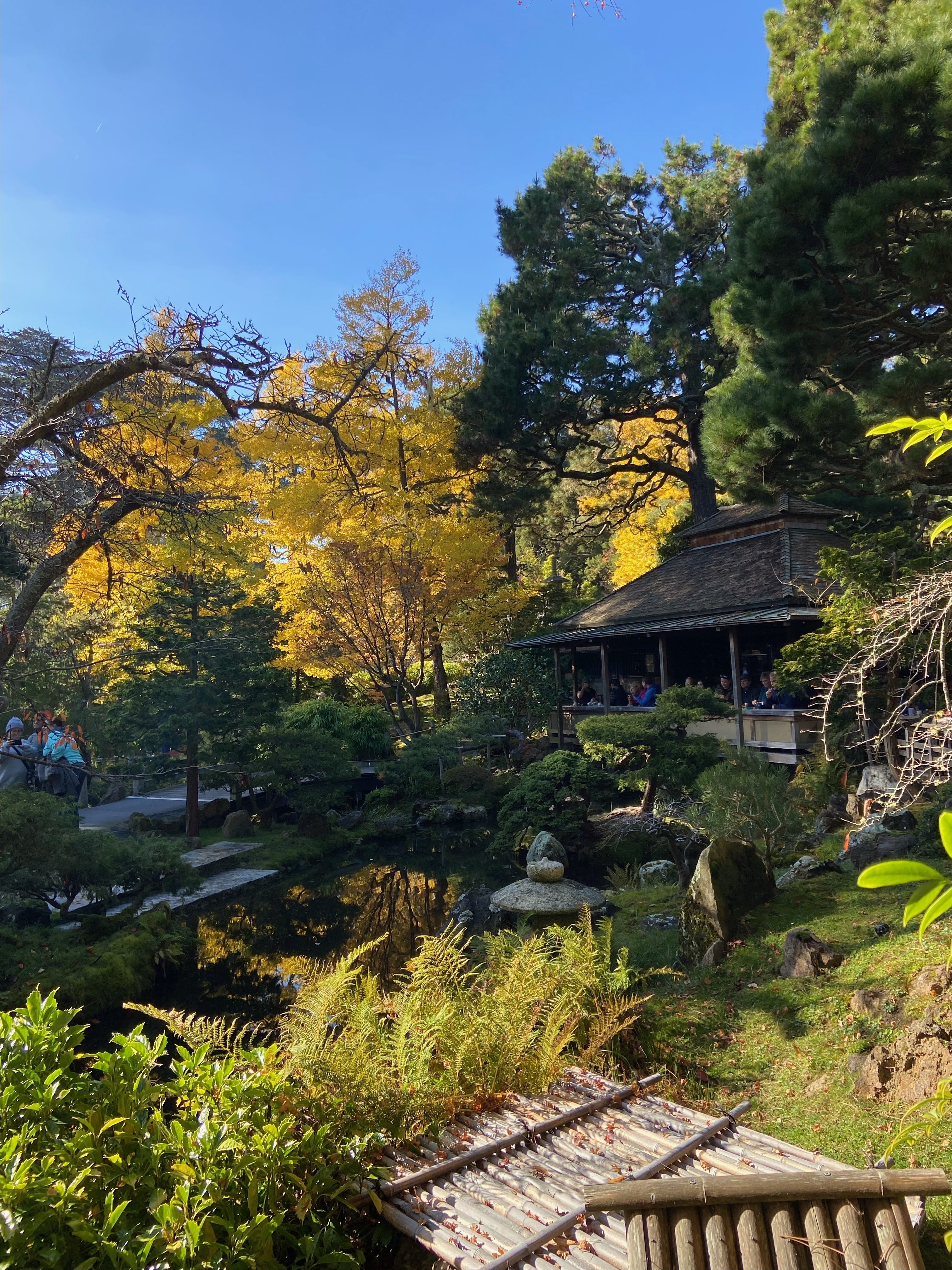
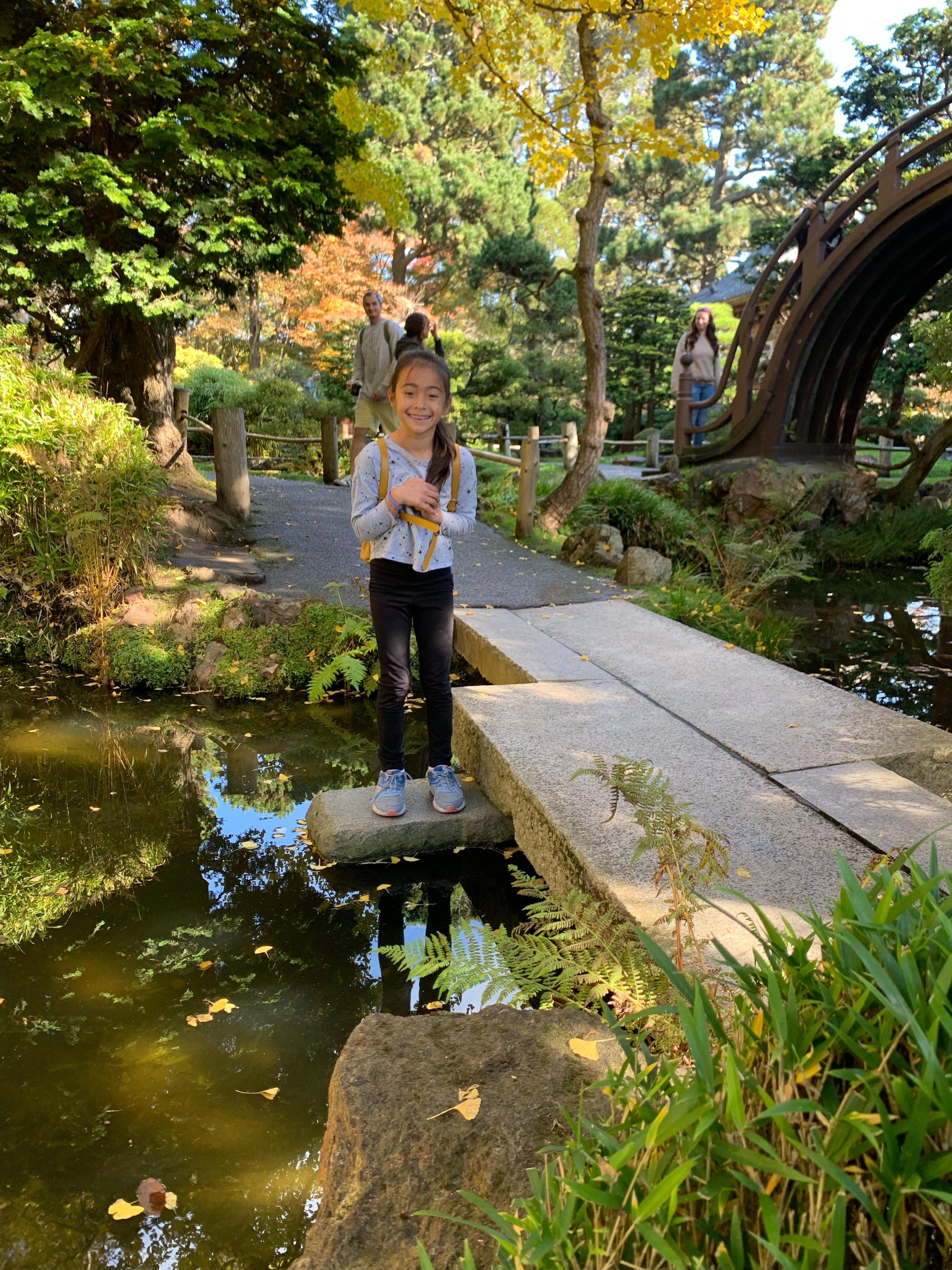
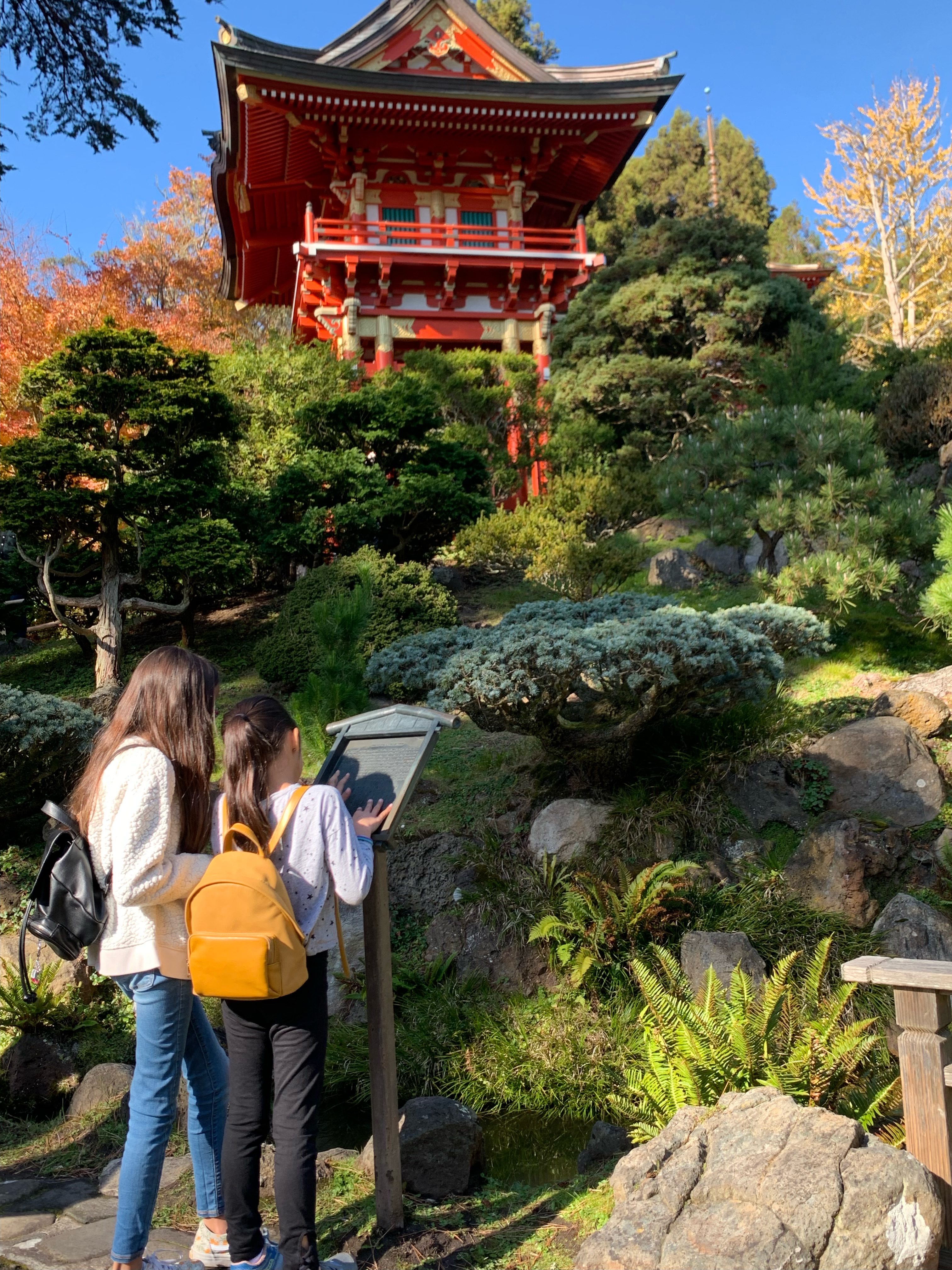
In Conclusion
The San Francisco
Japanese Tea Garden:
a truly magical space for the
The Japanese Tea Garden is a favorite for many children and grown-ups as there is so much to see and explore in such a small area. Plus, being in this magical garden makes you feel like you are in a completely different country, without the hassle of renewing passports.
From Japanese snacks, to fascinating water striders, and beautiful Japanese architecture, The Japanese Tea garden has something for everyone in your family, and is a place you won’t want to miss on your next visit to San Francisco.

